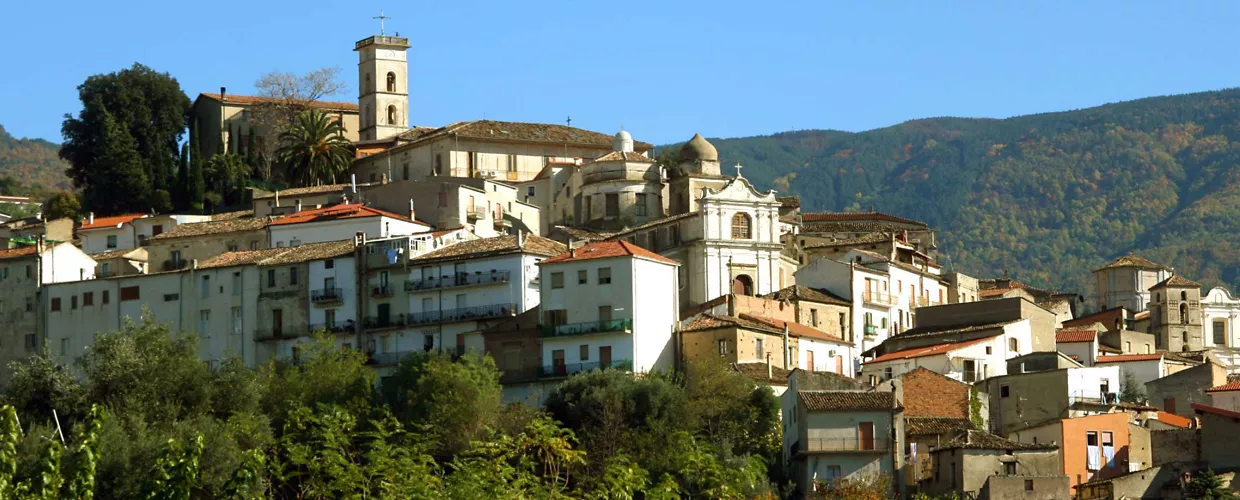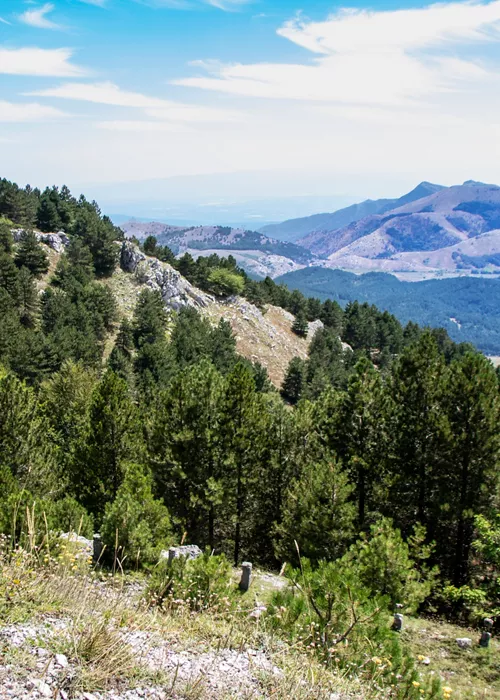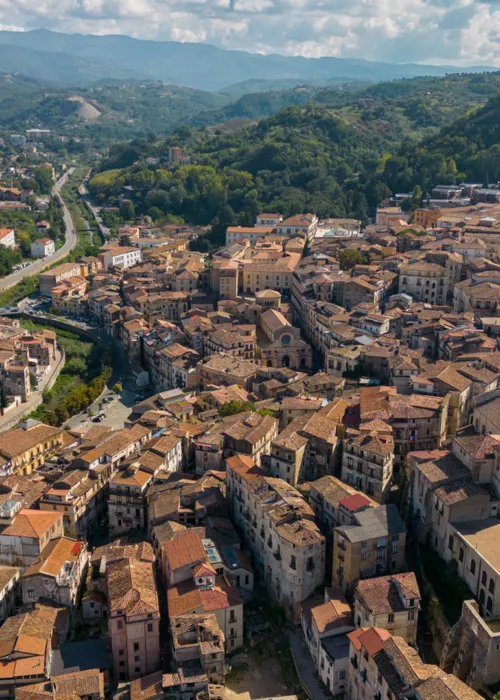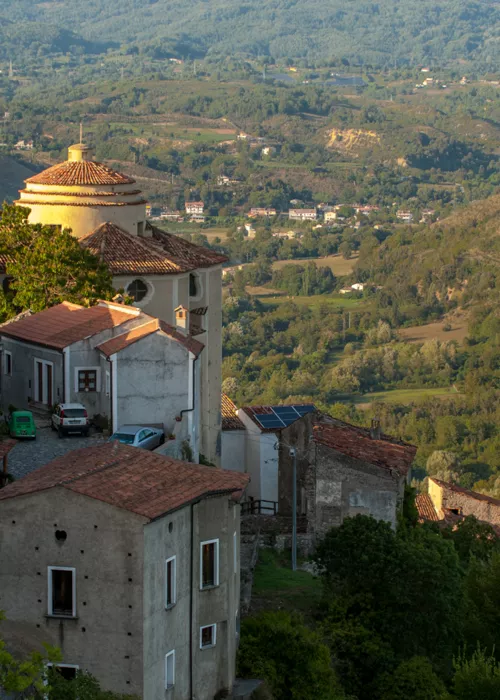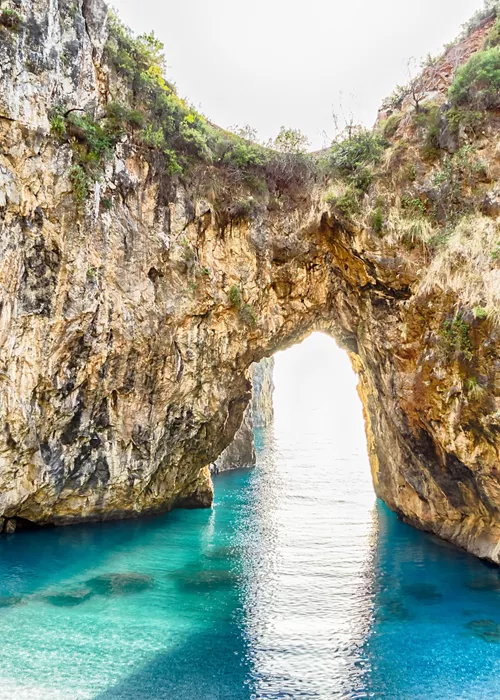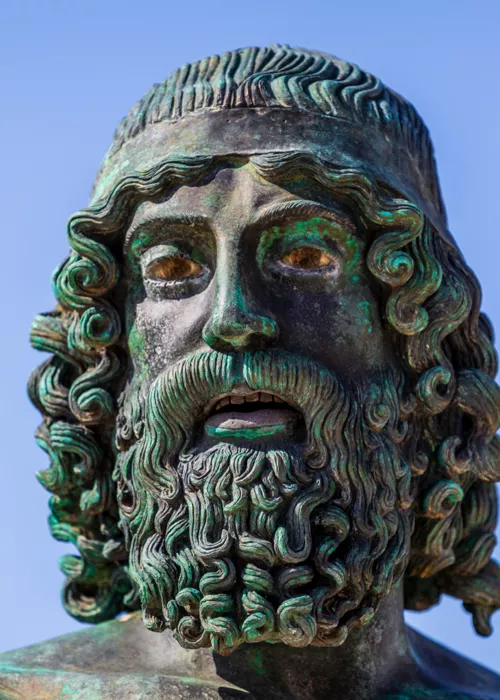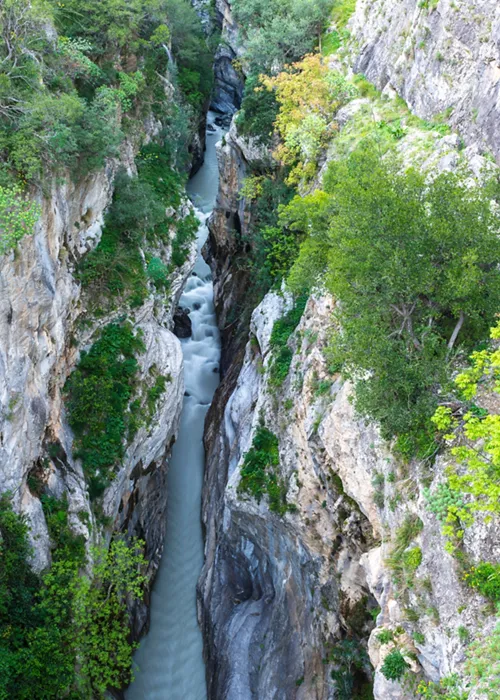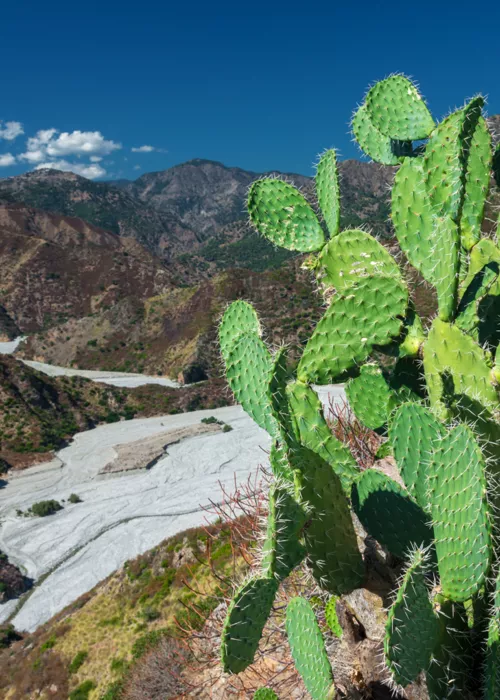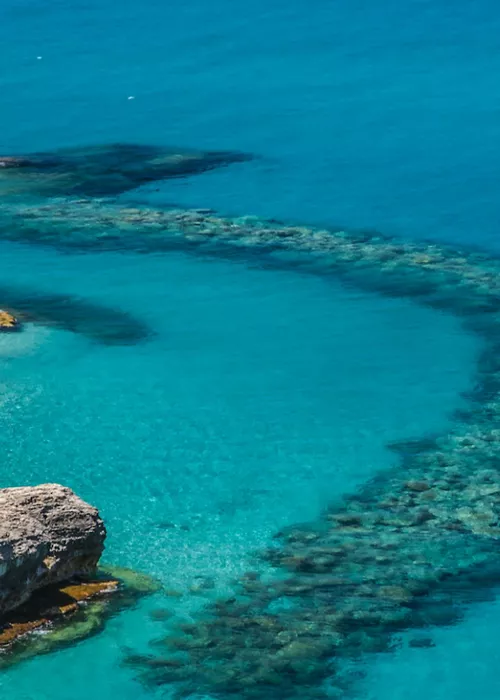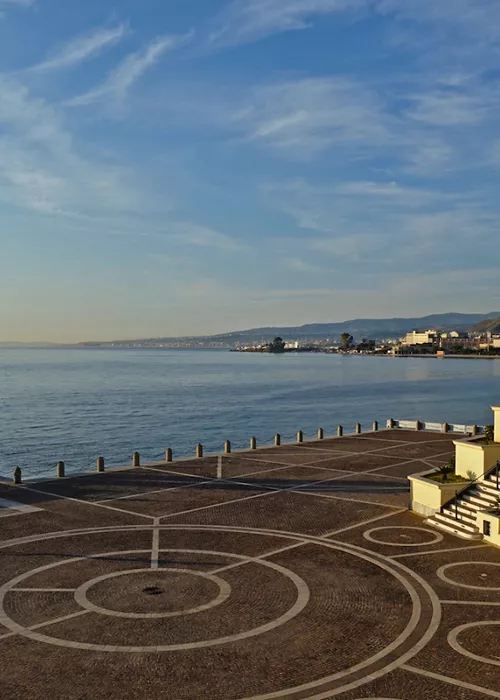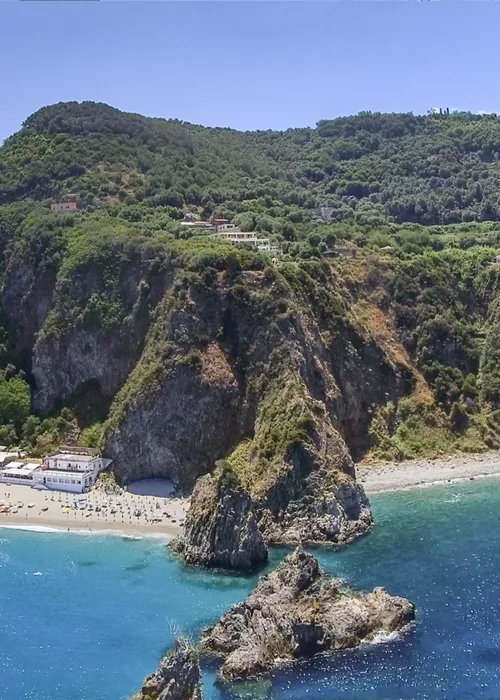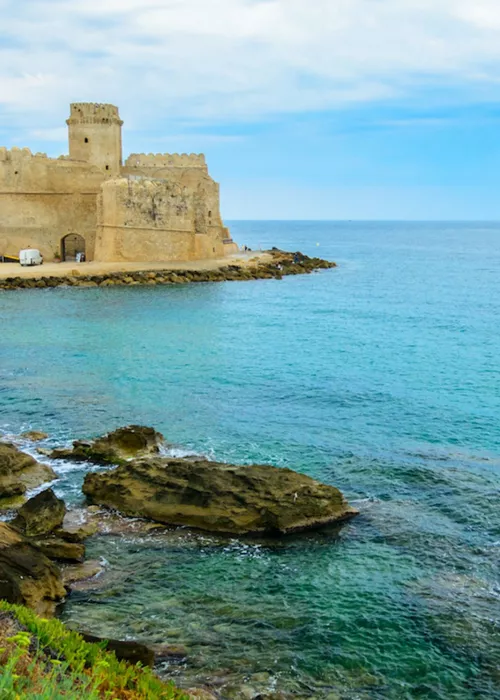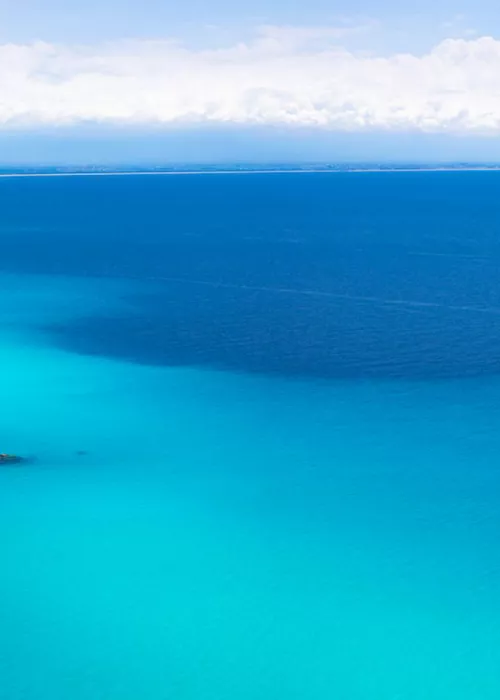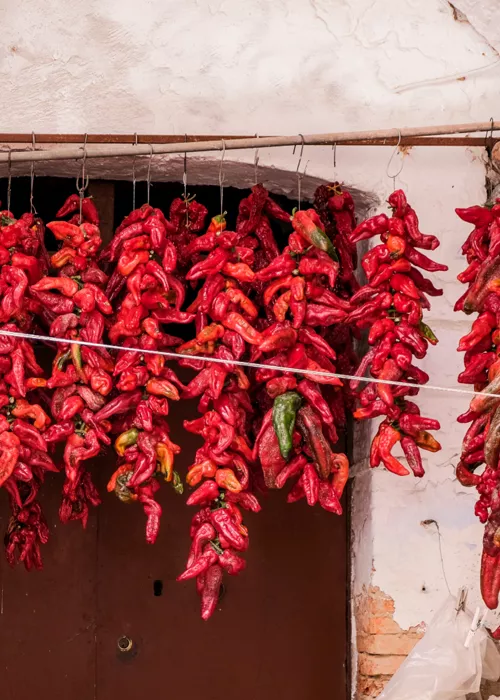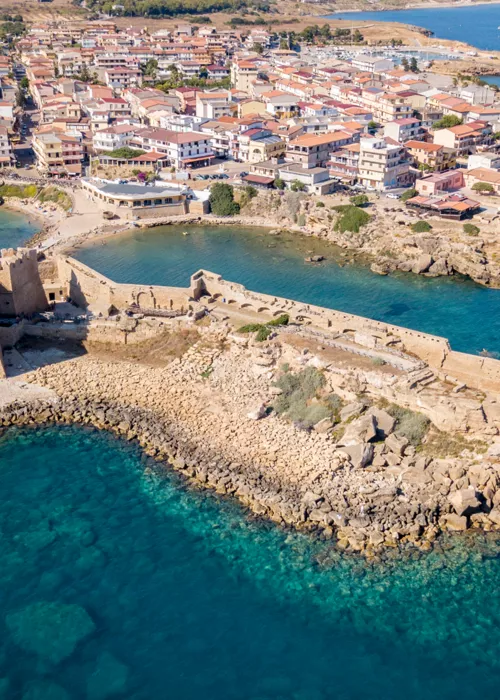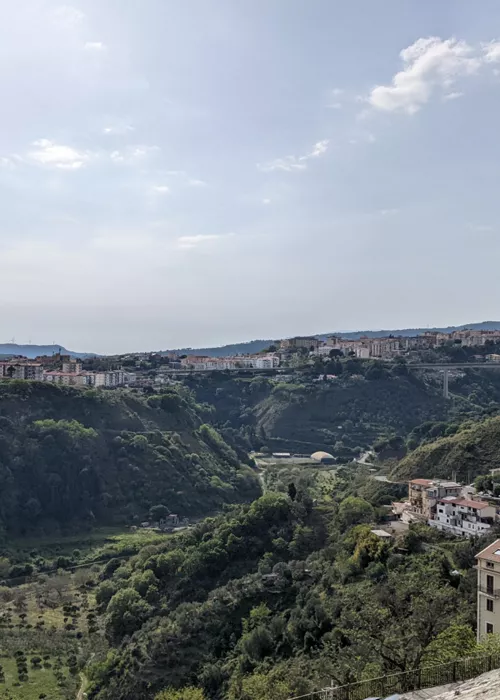Luzzi, a small municipality in the province of Cosenza, sits on a verdant hill in the Valle del Crati river valley. Renowned for its religious architecture, it is said to stand above the remains of ancient Tebe Lucana, a town of Magna Graecia, founded in the 4th century BC.
The mystical charm of the Sambucina Abbey, immersed in a wonderful landscape
The town of Luzzi is nestled in a picturesque, natural and cultural setting.
The 18th-century Town Hall has undergone a series of renovations over time. The Renaissance-style architecture of the square-layout exterior is particularly impressive.
Religious buildings include the 14th-century Church of Sant’Angelo, where a painting of Santa Maria delle Grazie by the school of Leonardo da Vinci was found and a 17th-century polychrome wooden altar, considered a national monument, is preserved, alongside a baptismal font in tuff stone with Romanesque-style sculptural motifs.
Particularly fascinating is the Santa Maria della Sambucina Abbey, a Cistercian monastery of great historical and artistic charm. An important religious and cultural centre from the late 12th century AD, it has hosted many famous people, including Abbot Gioacchino da Fiore. The church features elements of considerable artistic interest, including a large entrance archway, a door decorated with ornamental sculptural motifs, an apse wall with three single-arched windows and, inside, valuable works of art, including a fresco depicting the Madonna and Child, with 16th-century Tuscan influences, and the Assumption in Glory with Angels and the Twelve Apostles, dating back to the early 17th century.
A religious tourist itinerary
Luzzi offers several unmissable stops for visitors interested in sacred sites and religion, including the Church of Santa Maria delle Grazie, which houses paintings of the Baptism of Christ, the Portrait of Cardinal Giuseppe Firrao, and two canvases of the Madonna of the Rosary and of the Saints. Not forgetting the 16th-century Church of the Immaculate Conception, where you can admire two exceptional paintings: the Assunta in Gloria con Angioletti, by Luca Giordano, and the canvas painting of the Annunciation by Francesco Solimena. The church, which is the main parish of Luzzi, also houses the statue of the Patron Saint of the Immaculate Conception.
Equally impressive are the churches of San Michele Arcangelo, Madonna della Sanità (or Madonna della Cava), and San Francesco di Paola.
The Church of San Giuseppe, a chapel that once belonged to the Firrao family, is a popular pilgrimage site. The body of this martyr saint is enshrined in a catacomb decorated with early Christian art.
Finally, the Church of Natività di Maria SS, inside which you can admire the 18th-century Neapolitan painting Madonna of the Rosary, has an Arab-style dome, because it was likely a Muslim temple before it became a church.
The heterogeneous DOC wine of San Vito
In the small hamlet of San Vito, a young wine has been produced for many years now that received DOC recognition from the European Union in 1997: San Vito di Luzzi DOC. In the red, rosé and white wine varieties, it is one of the most heterogeneous wines made in Calabria, made from a blend of grape varieties, some of which are not indigenous, such as Sangiovese, which is used to produce the famous Brunello di Montalcino.
The grapes in this area are subjected to a humid and not very temperate climate, with frequent daily and seasonal temperature changes.



